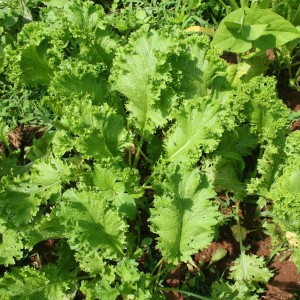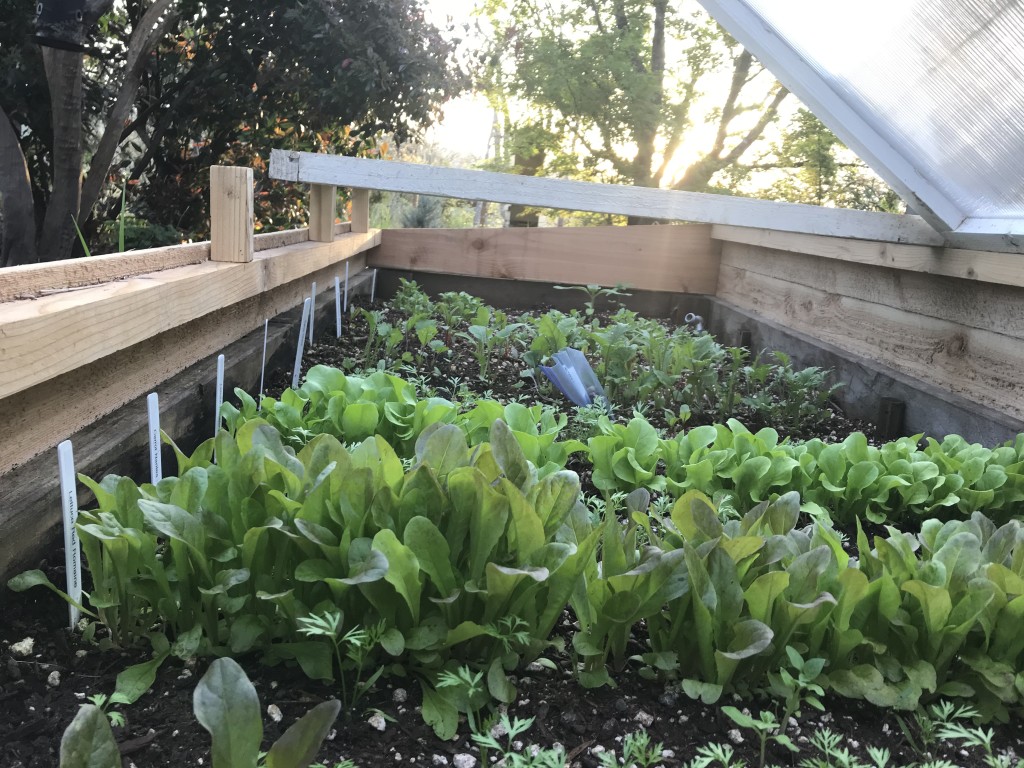Organic Greens are Fast and Easy
Not only are organic greens quick and easy to grow, they’re also simple and inexpensive. You can create great nutrient dense crops with just a little extra care and cost, and get the super nutrients that make greens healthy in even higher amounts. And, heck, you don’t even need a garden to do it!
Rising food prices, and the skyrocketing demand for organic produce are combining to push prices for these greens even higher, and making it harder to find these delicious goodies in the organic aisle.
(And make no mistake, the ONLY way you’ll want to find them is as organic, now that the latest EWG list is out, and the analysis of the conventionally grown greens is in.)
Conventionally grown greens are more toxic than all the other conventionally grown produce. They carry twice the pesticide load of other crops. And kale, is right up there with spinach as being the most likely to contain from 2 to 18 different chemicals! ACK.
You can learn more about the dangers of kale over at the EWG site if you want to know…
Or just grow your own. It’s so easy a child could do it, and so fast you won’t be waiting more than a few weeks before you’re enjoying your first baby kale harvest.
Grow Greens for a Fast Easy Start! 🌱
Kale and spinach, along with many other delicious greens of all kinds can be up and delivering baby greens within weeks. Just over-seed your new beds and use the extras as your baby greens mix as they grow.
By thinning the plants in this way you’ll avoid over-crowding and possible disease, and also get an early yield. Best part is, you don’t have to be so careful when seeding those tiny seeds into the bed. Heck you can even grow them indoors if you have no room for a proper garden.
Grow Them Indoors Or Out!
👉 Tip: if you’re looking to start your own micro greens indoor salad bar, a terrific book we highly recommend is Year-Round Indoor Salad Gardening: How to Grow Nutrient-Dense, Soil-Sprouted Greens in Less Than 10 Days by Peter Burke. It’s a terrific book we’ve used for years. Even our son in Iceland uses it to grow his indoor greens with great success in the middle of winter!
If you don’t live as far north as Iceland or Alaska, you can put in a simple cold frame ala Eliot Coleman, and eat greens all year round, harvested from outdoors. Even if you can’t start with a cold frame, you can start with indoor greens and get all the benefits of healthy greens in your diet with Peter’s book.
Either way, greens make a terrific place to start with growing your own fantastically potent healing food. Easy to grow and loaded with health benefits, they’ll give you a feeling of success and accomplishment in very short order.
How to Grow Your Own Greens
- Indoors or out, start with a good organic potting mix, your own compost if you have it, and a little bit of Perlite if you want to fluff up the soil. Use 2 parts potting mix, 1 part compost, and 1/3 part Perlite (by volume). You can use a 10×20 propagation tray, a section of a raised bed, or even a shoe box set on plastic. Pretty much any container will work. Mix your soil ingredients thoroughly in the container and spread to make a smooth surface. For a mineral boost add 1 tablespoon Azomite for a 1×3 foot bed, or 1 teaspoon per 10×20 tray and mix in thoroughly.
- To seed the bed, make furrows 1/4″ deep with 3″ spacing between them. Seed the furrows generously and cover lightly pressing into place.
- Water with a mister and add 1 part 3% hydrogen peroxide to every 20 parts water to speed sprouting and reduce the risk of molds.
- You can cover the seedbed if you wish, but you do not need to as long as you keep an eye on it. You don’t want the seedbed to dry out completely or the baby seedlings will die. A window sill can be used once the seeds have sprouted or you can follow Peter’s indoor method to keep the sprouts in a dark closet for the first few days of sprouting so they get long and leggy and then bring them out to the light. Once the sprouts are up and they begin to get thick in the furrows, start eating them to thin them as they grow.
Greens are Super Healthy Superfoods
Here are a few of the things they’re good for:
- preventing dementia
- improving heart health
- lowering cholesterol and blood pressure
- increasing vitamin and minerals in your diet
Kale and spinach are at the top of the list of healthy greens for high levels of calcium, iron, manganese, magnesium and potassium. These greens are also rich sources of vitamins, particularly vitamins K, A and C as well as B vitamins.
There are plenty of easy to grow greens beyond kale and spinach, many of which are less well known. Spicy and hot to mild and sweet, they come in all shapes and sizes. Here’s a great little comparison chart of nutrition for 7 of them.

Mustard greens are easy to grow and can even over-winter in cold frames for larger early spring harvests.
Try some fast growing bushy and spicy mustard greens, or the more delicate and lacy-leafed hot-tasting arugula (rocket). We’ve grown mustard greens with organic culinary mustard seed that we bought at the grocery store. Worked just fine! Or how about a very winter hardy and easy growing frilly mizuna for fresh greens all year ’round? You might not find those seeds in the grocery store.
Each one is different and delicious in its own right, and most are very easy to grow.
Best of all, you get to enjoy the rewards of your work so fast it’s hardly like gardening at all! Once you begin to grow your own greens, it will be hard to imagine how you ever lived without having them right there fresh for the picking whenever you want them.




